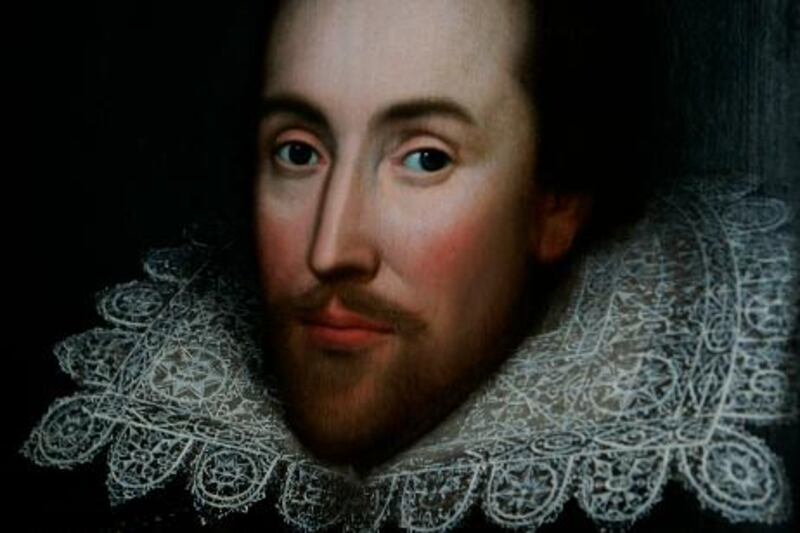It's one of the most heartbreaking scenes in drama. With heavy heart, Queen Gertrude returns to Elsinore to tell Laertes that his sister Ophelia, driven mad (or is she?) by the death of her father, has drowned. "There is a willow grows aslant a brook," she wails. "There with fantastic garlands she did come/Of crow-flowers nettles, daisies and long purples… till that her garments, heavy with their drink/ Pull'd the poor wretch from her melodious lay/To muddy death." Shakespeare's command of both language and imagination at this crucial point in Hamlet, his most famous tragedy, is total. But new research revealed this week suggests that the inspiration may have come from a far more prosaic source: a 1569 coroner's report.
That year, a little girl similarly laden with flowers was happily picking "yelowe boddles" (corn marigolds) when she suddenly fell into a mill pond and drowned, just 20 miles away from Shakespeare's home in Stratford-upon-Avon. Why (or indeed if) Shakespeare remembered this case 40 years later remains unclear, but historians at the University of Oxford have speculated that her familiar name - Jane Shaxpere - may have been one reason the sad tale stuck with The Bard. It's even possible, they've suggested, that she was a relative: Tudors were notoriously unfussy when it came to spelling.
If further research confirms what is, at this stage, speculation, then it would hardly be a surprise. For, right from the beginning of his writing career, Shakespeare was inspired by real-life events; his early plays charting in semi-fictional form the successive reigns of Richard II, Henry IV and Henry V. Whether, though, he was actually inspired by the dramatic potential of this seismic period in English history, or merely impressed by the distinctly similar stories already laid down in Raphael Holinshed's posthumous 1587 book Chronicles of England, Scotland and Ireland, remains something of a moot point.
Nevertheless, one of the many reasons Shakespeare has endured is undoubtedly thanks to plays rooted in real life rather than flights of fancy. The name Hamlet wasn't just made up on a whim, but borrowed from a history of the Danes, based on Scandinavian sagas written in the 10th and 11th centuries. When we think of the archetypal tale of star-crossed lovers, Shakespeare's Romeo and Juliet immediately comes to mind. But the warring families of the Montagues and Capulets are referred to in Dante's Divine Comedy, written in the early 14th century. Shakespeare based the plot on Arthur Brooke's translated poem The Tragical History of Romeus and Juliet, liberally adding elements from Ovid's Metamorphoses.
And King Lear sees Shakespeare at his most brazen: using Holinshed's Chronicles as a base text, he added Edmund Spenser's The Faerie Queene (which also includes a character by the name of Cordelia who meets a grisly end) and shoehorned in a subplot from Countess of Pembroke's Arcadia by Philip Sidney. Quite frankly, Shakespeare was lucky copyright legislation was still a few centuries in the making.
In fact, finding examples of totally original Shakespeare plays is virtually impossible. Those who prefer to think of artists working in vacuum-sealed environments, though, might be heartened by The Tempest, Shakespeare's last play and perhaps his most original. Even then, it's allegedly based on eye-witness reports of a 1609 shipwreck on the island of Bermuda, which Shakespeare, it's suggested, would have read.
Does such reliance on material by others really matter? In the end, of course, it's King Lear that we still flock to see, while the works of Spenser and Sidney are mere footnotes in Shakespeare's story. And if Ophelia's death was based on that of the real-life Jane Shaxpere, then arguably that makes the image of a flower-laden girl drowned in an idyllic pool all the more powerful.
It's no different from the Booker Prize nominee Emma Donoghue using the horrific actions of the kidnapper Josef Fritzl as the starting-off point for her book Room, but then moulding her own completely different story from the initial components.
And, in the end, that's how Shakespeare approached his storytelling: he compressed history, streamlined source material and, sometimes, made stuff up. But he was better at combining all these elements - in so doing, fashioning thrilling theatre - than virtually anybody else in history. It's the very human drama of his stories rather than their sources that has made his plays timeless.
If, of course he actually wrote them at all, which is the subject of continued discussion. In the end, though, even that debate is redundant. We have the work. The play's the thing.






